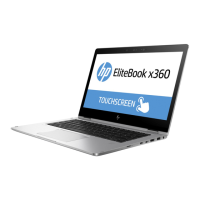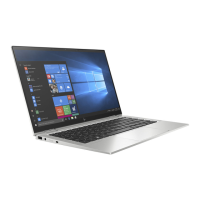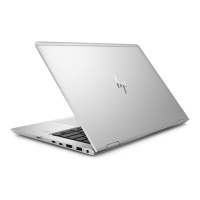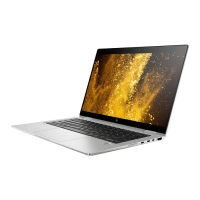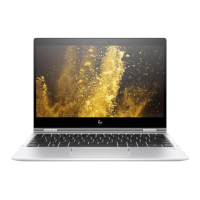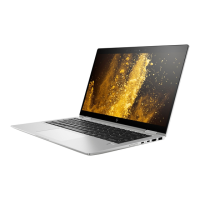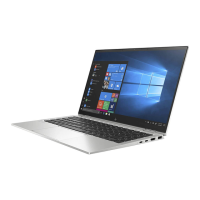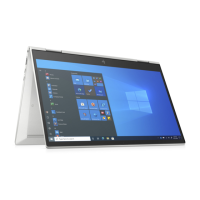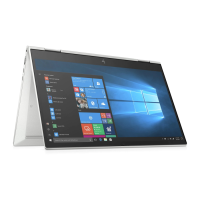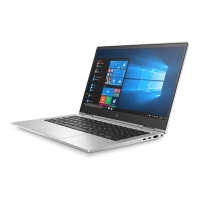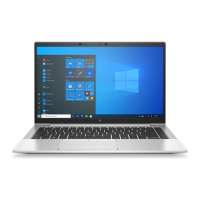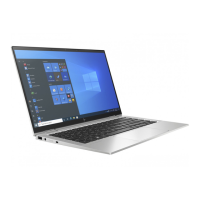
Do you have a question about the HP EliteBook x360 1030 G2 and is the answer not in the manual?
| Form factor | Convertible (Folder) |
|---|---|
| Product type | Laptop |
| Product color | Silver |
| Country of origin | China |
| Bus type | OPI |
| Stepping | H0 |
| Tjunction | 100 °C |
| Processor cache | 3 MB |
| Processor cores | 2 |
| Processor model | i5-7200U |
| System bus rate | 4 GT/s |
| Processor family | Intel® Core™ i5 |
| Processor socket | BGA 1356 |
| Processor threads | 4 |
| Processor codename | Kaby Lake |
| Configurable TDP-up | 25 W |
| Processor frequency | 2.5 GHz |
| Processor cache type | Smart Cache |
| Configurable TDP-down | 7.5 W |
| Processor lithography | 14 nm |
| Processor manufacturer | Intel |
| PCI Express slots version | 3.0 |
| Processor boost frequency | 3.1 GHz |
| Processor operating modes | 64-bit |
| ECC supported by processor | No |
| PCI Express configurations | 1x2+2x1, 1x4, 2x2, 4x1 |
| Thermal Design Power (TDP) | 15 W |
| Configurable TDP-up frequency | 2.7 GHz |
| Configurable TDP-down frequency | 0.8 GHz |
| Maximum number of PCI Express lanes | 12 |
| Pointing device | Touchpad |
| Spill-resistant keyboard | Yes |
| Internal memory | 8 GB |
| Memory clock speed | 2133 MHz |
| Internal memory type | DDR4-SDRAM |
| Maximum internal memory | 16 GB |
| Memory layout (slots x size) | 1 x 8 GB |
| SSD capacity | The Solid State Drive's storage capacity in Gigabytes. |
| SSD interface | PCI Express |
| Storage media | SSD |
| SSD form factor | M.2 |
| Total storage capacity | 256 GB |
| Compatible memory cards | MicroSD (TransFlash) |
| Number of SSDs installed | 1 |
| Display diagonal | 13.3 \ |
| Native aspect ratio | 16:9 |
| On-board graphics card ID | 0x5916 |
| Discrete graphics card model | Not available |
| On-board graphics card model | Intel® HD Graphics 620 |
| On-board graphics card family | Intel® HD Graphics |
| Maximum on-board graphics card memory | 32 GB |
| On-board graphics card OpenGL version | 4.4 |
| On-board graphics card base frequency | 300 MHz |
| On-board graphics card DirectX version | 12.0 |
| On-board graphics card dynamic frequency (max) | 1000 MHz |
| Battery capacity | 57 Wh |
| Battery life (max) | 16.5 h |
| Number of battery cells | 3 |
| AC adapter power | 65 W |
| Front camera signal format | 720p |
| Wi-Fi standards | 802.11a, Wi-Fi 5 (802.11ac), 802.11b, 802.11g, Wi-Fi 4 (802.11n) |
| Bluetooth version | 4.2 |
| Top Wi-Fi standard | Wi-Fi 5 (802.11ac) |
| Mobile network generation | 4G |
| HDMI version | 1.4 |
| Charging port type | DC-in jack |
| USB 2.0 ports quantity | USB 2.0 ports have a data transmission speed of 480 Mbps, and are backwards compatible with USB 1.1 ports. You can connect all kinds of peripheral devices to them. |
| USB 3.2 Gen 1 (3.1 Gen 1) Type-A ports quantity | 0 |
| Sustainability certificates | ENERGY STAR |
| Processor code | SR2ZU |
| Processor ARK ID | 95443 |
| Processor package size | 42 x 24 mm |
| Supported instruction sets | AVX 2.0, SSE4.1, SSE4.2 |
| Intel Identity Protection Technology version | 1.00 |
| Intel Stable Image Platform Program (SIPP) version | 0.00 |
| Intel segment tagging | Home Office, Small Business |
| HP segment | Business |
| HP Security tools | HP Secure Erase, HP Client Security, HP Security Manager |
| HP Management tools | HP Driver Packs, HP SoftPaq Download Manager, HP System Software Manager, HP BIOS Config Utility, HP Client Catalog, HP MIK |
| HP Software provided | HP BIOSphere, HP SureStart, HP Password Manager, HP Spare Key, HP Device Access Manager, HP DriveLock, HP Hotkey Support, HP Noise Cancellation; HP Image Assistant |
| Harmonized System (HS) code | 84713000 |
| Depth | 218.5 mm |
|---|---|
| Width | 316.9 mm |
| Height | 14.9 mm |
| Weight | 1280 g |
Details the available Intel processors for the device.
Specifies the screen size, resolution, and other display features.
Outlines memory capacities and storage drive types.
Guides on finding installed hardware and software.
Identifies display, cameras, microphones, antennas, fingerprint reader, lights, keys, and touchpad.
Identifies ports and components on the left, right, and bottom sides.
Explains how to locate and understand the computer's service tag.
Provides an exploded view of the computer's main internal parts.
Lists various accessories and smaller replacement parts.
Lists required tools and general precautions for servicing.
Details care for cables, drives, and electrostatic discharge prevention.
Step-by-step guide to remove the computer's bottom cover.
Instructions for removing and replacing the system battery.
Procedure for removing and replacing the solid-state drive.
Detailed steps for removing and installing the main system board.
Guide for removing and reinstalling the heat sink assembly.
Explains how to enter and navigate the BIOS/UEFI setup.
Details how to check for, download, and install BIOS updates.
Covers settings for Trusted Platform Module and HP Sure Start.
Explains the purpose and use of the UEFI hardware diagnostics.
Instructions for downloading and creating a bootable diagnostic USB drive.
Lists dimensions, weight, temperature, and humidity limits.
Methods for creating system backups and recovery media.
Explains different methods for restoring the computer.
Details various types of nonvolatile memory and their characteristics.
Outlines power cord requirements applicable worldwide and by region.
Guidance on proper disposal of batteries and electronic hardware.
